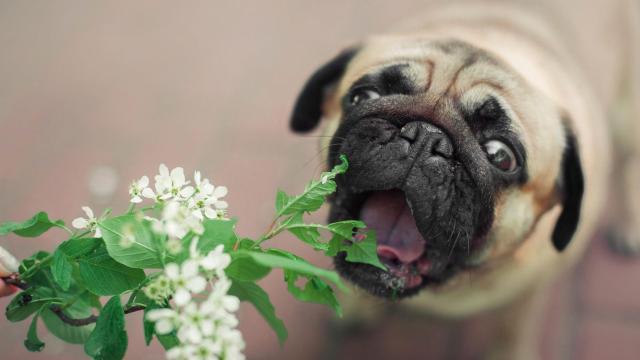Houseplants are a great way to decorate and keeping them can even have psychological benefits — but to a curious cat or dog, many plants could also pose a major health risk. So before you bring just any plant home, you should acquaint yourself with the telltale signs of toxicity, so you can comfortably decorate without worrying about the possibility of poisoning your beloved pet.
How to recognise a toxic plant
You probably know certain plants are bad news for a cat or dog, but it’s important to understand the sheer breadth of common household plants that can be deadly to pets. According to the Humane Society, there are “more than 700 plants that have been identified as poisonous (meaning they produce physiologically active or toxic substances in sufficient amounts to cause harmful effects in animals).” And while the vast majority of those plants won’t be on sale at your local nursery or hardware store, knowing they exist should be reason enough for caution.
If you’re perusing plants, scan for the requisite signs of toxicity before you bring them home. Garden Knowhow recommends avoiding plants with:
- Milky sap
- Naturally shiny leaves
- Yellow or white berries
- Umbrella-shaped plants
These are the most common outward-facing signs of toxicity, and should be easy enough for a relative layperson to detect. Since most of us aren’t plant taxonomists, however, it’s wise to ask the people you’re purchasing plants from if they’re suitable for animals, or do your own research — a quick internet search as you load your cart could save you a great deal of heartache down the road.
What plants are known to be toxic to cats and dogs?
As noted, many plants are harmful to animals, so be sure to research a specific plant if you’re unsure. Still, there are some common plants known to be unsafe for a household with pets. The American Society for the Prevention of Cruelty to Animals (ASPCA) provides a list of 10 plants to be especially wary of, considering they’re quite common decorative fixtures in households and gardens:
- “Lilies, including Asiatic lilies and daylilies, can be toxic to both dogs and cats, however the effects are much more severe in cats.”
- “Azaleas and rhododenrons can have different effects depending on the amount ingested by dogs, cats and horses.” These are commonly found in people’s gardens and in parks.
- “Sago palms are highly toxic to small animals and overall dangerous to all pets. While the entire plant is toxic, the seeds or nuts, are the most toxic part.”
- “Tulips, though beautiful, can cause stomach upset, which in some cases can be severe.”
- “Hydrangeas have the potential to be very dangerous as they contain cyanide.”
- “Daffodils can cause stomach upset if ingested, which in some cases can be severe.”
- “Hostas make for some gorgeous greenery in a backyard. But be sure to pay attention to your pets around them as they can cause stomach upset.”
There are many more toxic plants than these, so again, make sure you know what you are bringing indoors first. If you want to avoid the risk (and the onus of research) altogether, stick to plants that are known to be safe for your pets.
And if the worst does occur and you suspect your pet has ingested something they shouldn’t, get the animal to a vet or emergency clinic immediately.

Leave a Reply
You must be logged in to post a comment.